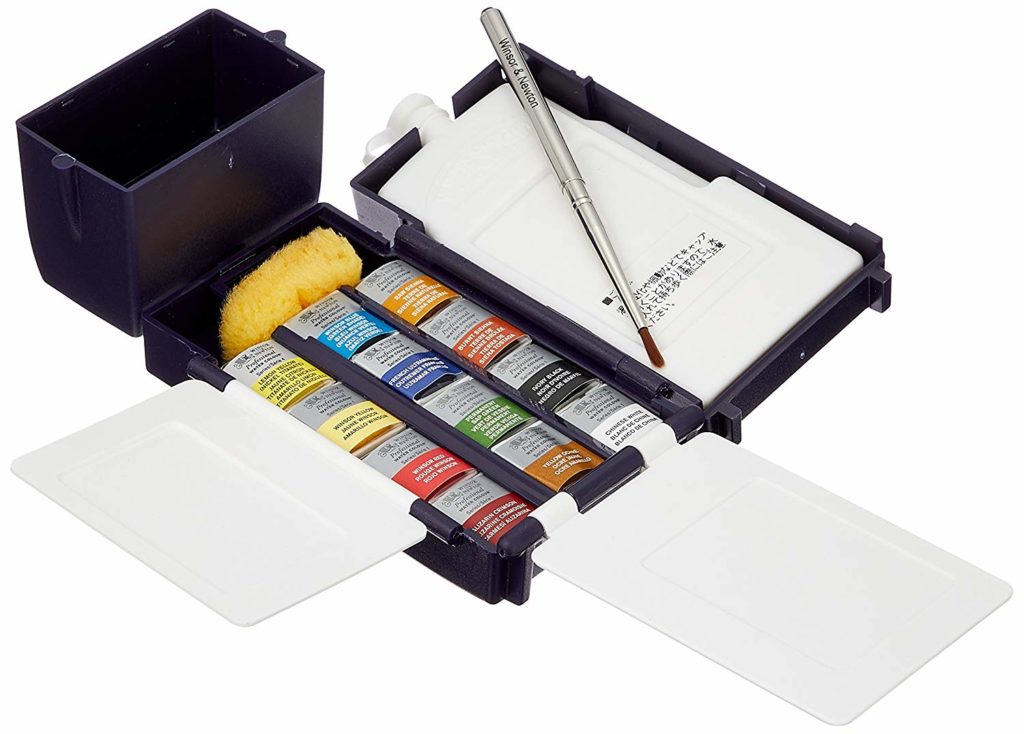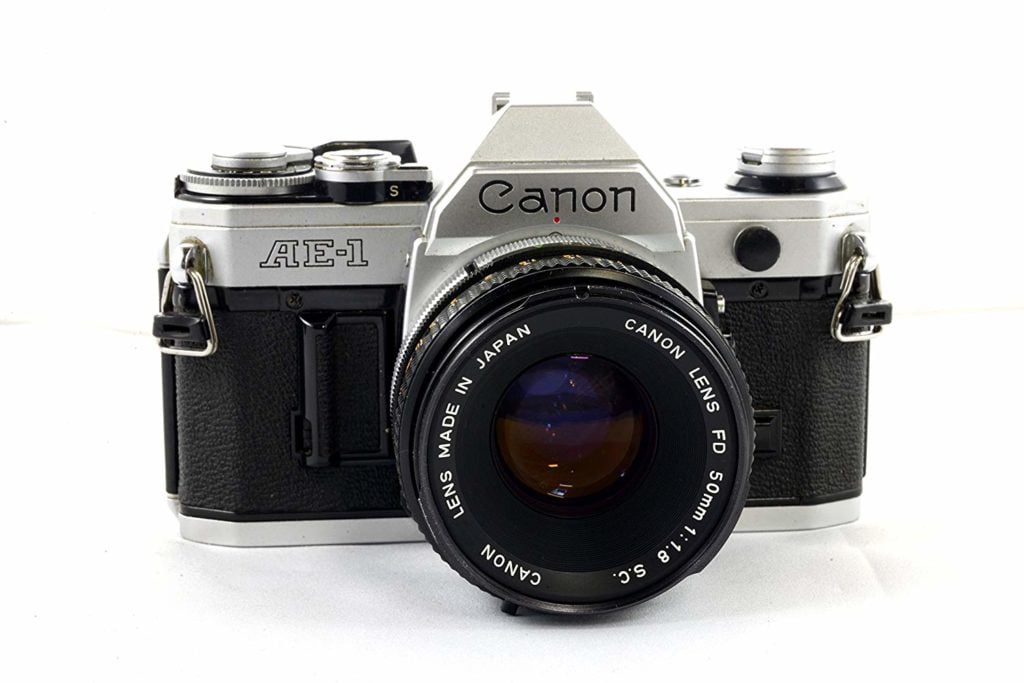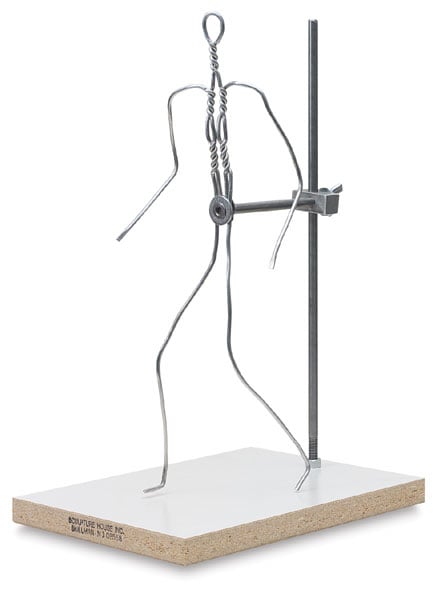Ah, summer! I don’t know about you, but no matter how old and busy I get I still associate the season with leisurely downtime when I can pick up a new skill, or immersive myself in a hobby. If you’re looking to tap into your creativity this summer by trying your hand at making art—thereby following in the footsteps of what seems like every celebrity in the world these days—look no further: we’ve put together a one-stop shopping list for all the supplies you’ll need to get started. As a former professor of studio art, I know a good deal when I see one, so the items you’ll find below are both high-quality and (for the most part) accessibly priced.
Whether you’re planning to pick up the paint brush or get down and dirty with some sculpting (like Seth Rogan, perhaps), just go for it! You won’t regret it—and just think of all the money you’ll save on presents for your loved ones for years to come.
If you’re interested in watercolors…

Watercolors are pretty much the perfect entry point for some good old-fashioned hobbyist painting: they’re small, transportable, and don’t require smelly solvents. Just picture yourself by the river, sunhat on, gently dabbling your paint brush in some ultramarine and painting some squiggly waves. You can even smile beatifically at passersby as they stop and admire your handiwork, knowing full well they’re jealous of your cool and sophisticated hobby.
To get started, you can’t go wrong with this thoughtfully crafted little kit from Windsor & Newton—a well-loved brand among artists—that has everything you need, down to a refillable little water bottle and a sponge for cleaning up your edges. If the $100 price tag feels too steep, a great option is this pocket box—just remember to pack your own water, cup, brush, and palette.
Fancy option: Winsor & Newton Watercolor Field kit for $100
Budget-friendly option: Winsor & Newton Watercolor Pocket Box for $19
Bonus: You’ll need something to paint on, and Arches paper is the gold standard for watercolor for a reason. Plus, it comes packaged in such a way that it won’t buckle from moisture. Pick up a pack here: Arches Watercolor Paper Block for $30
If you’re interested in oil painting…

By contrast, oil paint is pretty demanding. It requires a ventilated space, more cleanup, and a number of accessories that can rack up costs fast. But if you opt for the oil route, you’ll be rewarded with one of the most flexible and durable artistic traditions of all time—and one of the most forgiving as well, since you can keep reworking your surface as oil paint typically takes days to dry. Just think! You’ll have all the time in the world to carefully render that summery fruit still life, or presidential parody.
If you want to give it a whirl, I say spring for the good stuff and get yourself a nice Gamblin introductory set with generously sized tubes and high-quality pigments. It’ll last you for ages, and has everything you need to mix virtually any color under the sun. If you’d rather ease into things, go ahead and get this Windsor & Newton starter set that’s also totally solid.
Fancy option: Gamblin Artist Introductory Set for $79
Budget-friendly option: Windsor & Newton Starter Set for $37
Bonus: For the whole oil-painting kit and caboodle, you’ll also need, at minimum, some solvent (get the odorless version called Gamsol for $18), a palette (the easily disposable paper kind for $9 is a smart choice), and a variety of brushes (this kit is good and includes a palette knife for mixing for $19). You’ll likely also want an easel for the full experience, and so Van Gogh for it and pick up this transportable easel for $57.
If you’re interested in photography…

Go old-school! Everyone is an amateur iPhone photographer these days, so I think if you’re going to develop your skills as a shutterbug I say shoot on film. That said, I’m no photographer myself, so I consulted professional photographer Gregory Gentert (aka my boyfriend) for expert advice. He’s a big fan of the Canon AE-1 as an entry-level camera, which is available used starting at $137—and “the lens is better than one you would get on a $500 digital camera,” he says.
Once you’ve got your Canon in hand, you’ll need a place to develop your film, which is becoming rarer and rarer these days. If you’re in New York City, Greg endorses Luster and Color House for reliable and swift service.
Our pick: Canon AE-1 35mm, starting at $137
Bonus: Pick up either some black-and-white Kodak TRI-X 400 (seven rolls for $50) or some color Fuji Superia 400 (three rolls for $16) and get shooting. Don’t worry about a lighting kit just yet, but a straightforward reflector (available in multiple colors for $20) is always useful for helping fill out shadows and casting some flattering highlights.
If you’re interested in sculpture…

Good news: you have a lot of options here! In the broad realm of sculpture, you can carve wood, solder metal, or tackle postmodern assemblage if that’s to your edgy taste. I personally enjoy figurative sculpture, which is a great way to challenge yourself and start thinking three-dimensionally.
Terracotta is the perfect starter material, since it doesn’t require a studio in the way that most clay or pottery does. It’s also malleable at warm temperatures, making it a perfect summer material that will gradually dry and harden.
Our pick: Get yourself a wire figure armature ($12), some terracotta air dry clay (two pounds for $12), and a patient friend willing to pose for you (priceless, but free).
Bonus: You’ll definitely find this tool kit for $17 useful, as it includes a variety of equipment for carving, scraping, and smoothing.
If you’re interested in drawing…

Drawing is really the great equalizer, ultimately requiring very little to get started. You could could always get yourself a simple sketchbook and start using whatever pen you carry in your pocket to set down scenes from your daily life. (Other subway commuters are always a popular subject!)
If you expand to charcoal, however, you can begin to really tap into the creative potential of mark-making, thanks to how malleable the material is. Don’t be surprised if you fall in love with the stuff—it’s extremely loose and fun—and end up covered in charcoal dust, looking like you just emerged from a mine. (That was my experience during freshman year of art school, anyway.)
Our pick: Load up on some dark and dramatic compressed charcoal (a pack of six for $9), a handful of lighter-weight willow charcoal (30 for $7, perfect for sketching), and big pack of newsprint (100 sheets for $12)—then go to town drawing everything in sight.
Bonus: I love a good kneaded eraser (three pack for $5) and chamois cloth (two for $9), both of which are terrific mark-making tools in their own right.
No matter what medium you choose, go forth, you budding artist! A summer of creativity awaits you!
Nota bene: All our recommendations are independently chosen by members of the artnet News team. If you make a purchase through links in this article, artnet News will earn an affiliate commission that helps fund the art-world journalism you rely on.











